While there are renowned festivities for Día de Muertos all over the country, Mexico City remains one of the best places to celebrate for the sheer number of things to do and see. Everything from giant altars to special foods, decorations, and parades are held to honor the dead.
What is Día de Muertos?
Día de Muertos, or Day of the Dead, is more than anything a remembrance of life. Following the belief that spirits of the dead return to Earth the night of November 1, families construct ofrendas, altars lovingly adorned with the favorite foods, drinks, and vices to nourish the spirits upon their return. The tradition can likely trace its roots to All Souls’ Day in Catholicism, but at its heart is the Indigenous belief that through ritual you can communicate and nourish those in the afterlife.
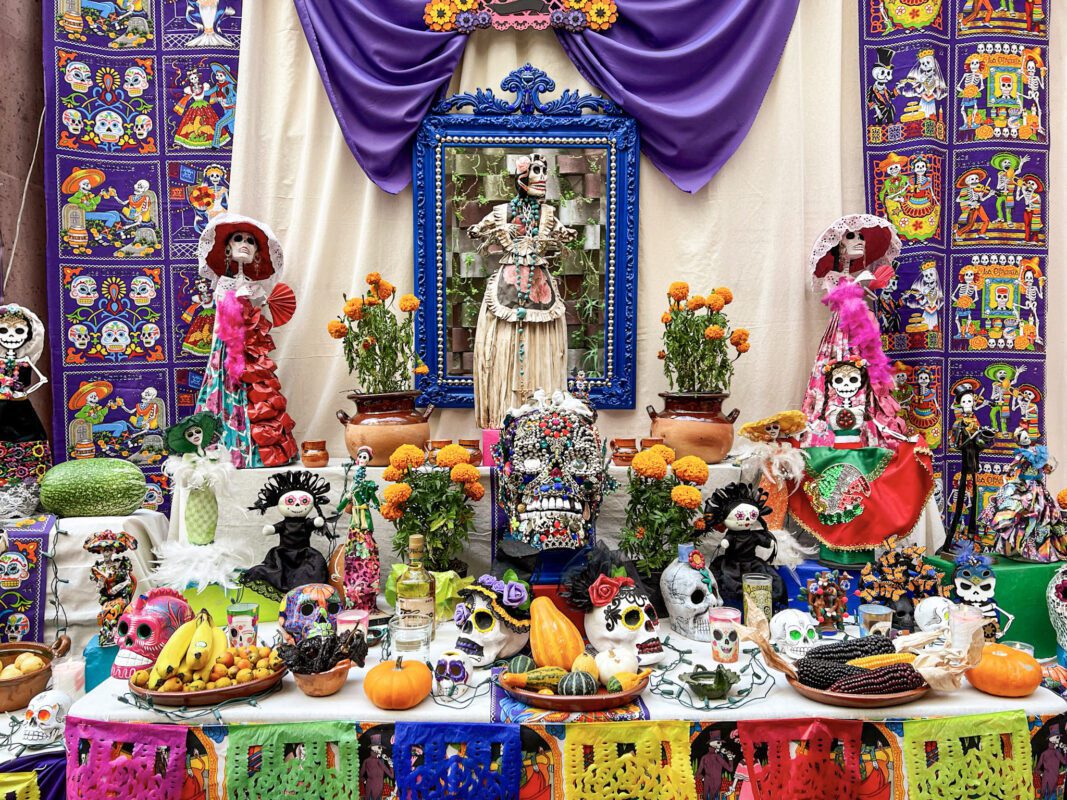
While deeply personal it’s also a celebration. In the days leading up to Día de Muertos, you’ll witness the setting up and an overall feast for the senses: the aroma of copal incense, the sweet taste of pan de muerto, the vibrant yellow marigolds and papel picado. Finally on the night of November 1, cemeteries come alive with candlelight vigils and memorials, as the living and the departed share the night.
How to celebrate Día de Muertos in Mexico City
It’s easy to immerse yourself in Día de Muertos in Mexico City as an outsider, but you do miss out on the more intimate, traditional practices in lieu of big city displays. Starting in late October you can admire altars throughout the city, find themed city tours, and attend special events.
Watch the main parade
The Desfile de Día de Muertos is a modern tradition, started in 2015 and said to have been inspired by the fictional one depicted on the James Bond Sceptre movie. Featuring everything from giant calaveras, catrinas, and alebrijes to dancers and floats, it’s a good example of the more commercial influences of Día de Muertos but still a sight to behold.
The Día de Muertos parade in Mexico City changes year-to-year but is usually held on the weekend closest to November 1 and follows the route along the Paseo de la Reforma from Parque Chapultepec to the Zócalo in Centro Historico.
It’s incredibly crowded so you have to get there very early if you want a chance at getting a good view. That’s why to get the easiest views of the parade, I recommend either staying at one of the hotels or or making reservations at a restaurant right on the parade route as soon as the date is announced. The Diana Restaurant at the St. Regis is expensive but has some of the best views.
Note there are famous, smaller parades such as the Mega Procession of the Catrinas and the Alebrije Parade where you can witness the craft aspects of the holiday equally well.
Pay respects at the cemeteries
Día de Muertos is a time where families clean, adorn, and gather around the tombs of their loved ones. At night, cemeteries alight with candlelit vigils and the haze of burning incense. The best way to “participate” is to bring marigolds, candles, or food to share with others.
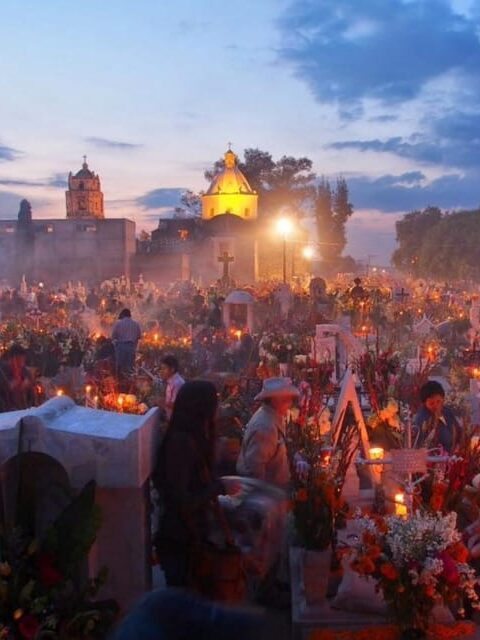
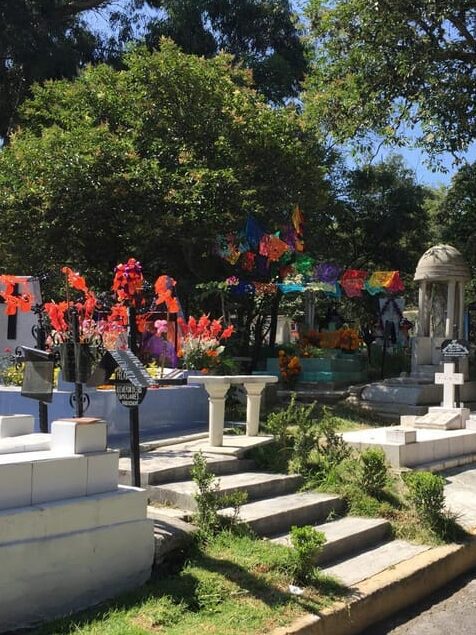
The famous San Andrés Mixquic cemetery inspired the movie Coco and witnesses thousands of visitors for Día de Muertos annually. The evening of November 2 is particularly magical where thousands of candles are lit during the Alumbrada. Mixquic is located 1.5 hours away from Mexico City, so the easiest way to visit is on a guided tour.
Panteón de Dolores, about 45 minutes away from the city center, can visited by taking the Metrobús 7 line or via this guided tour, which includes a local lunch and optional mezcal tasting.
Remember you’re witnessing intimate moments, so be respectful by avoiding touching items and asking before taking pictures of the ofrendas.
Watch folk performances on the Xochimilco canals
Xochimilco is already a colorful place made extra festive with Día de Muertos activities. Here you travel on canals manmade islands called chinampas that were used for farming in Aztec times (a particularly eerie one you can visit is the Island of the Dolls).
During the time around Día de Muertos, you can catch theatrical night shows that depict traditional stories such as La Llorona (2024 dates from Oct. 18- Nov. 17) or the new Return to Mictlán (2024 dates from Oct. 18- Nov. 9).

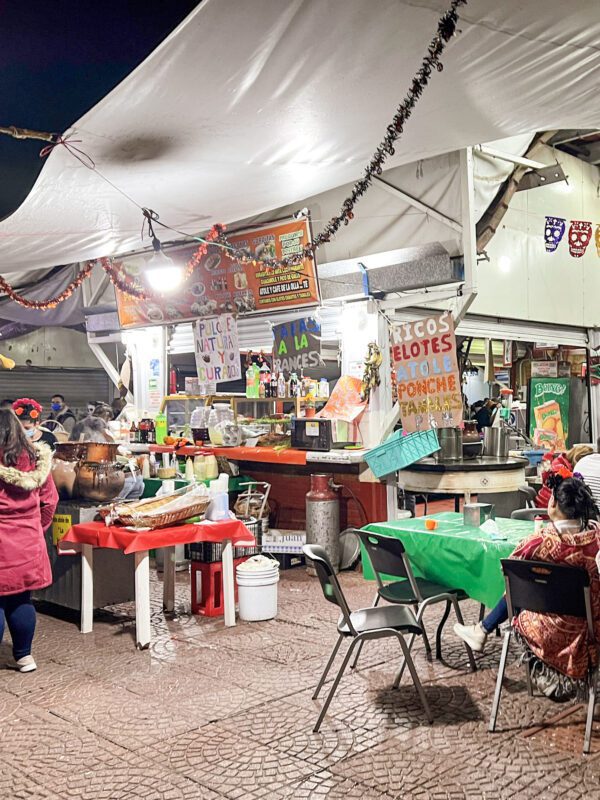
It’s pretty easy to get an Uber to the Xochimilco area and hire a trajinera at any one of the embarcaderos, although it can be more difficult to get one for the ride back. Transportation is taken care of when you book a guided tour.
Face painting in Mexico City for Día de Muertos
Let’s first say that dressing up as a festive skeleton is not a tradition but more of a celebratory (and commercial) aspect of the holiday’s heritage. The skeleton women dressed in ornate costume is based on La Calavera Catrina by Jose Guadalupe Posada, a lithographer and engraver. The illustration was satirical in nature, allegedly poking fun at the early 1900s European aspirations of the Mexican bourgeoisie.
Later it was revived in a more Mesoamerican tradition by the muralist Diego Rivera, which explains why you’ll see Catrinas in both Victorian and traditional Mexican dress. This imagery became even more ubiquitous with the release of the 2017 Pixar movie Coco which brought the idea of alebrijes, the animal spirit guides of the underworld, and many other symbols alive.


You can find face painting done by individual artists in many places around the city center. We found Catrina-style face painting around the Paseo de la Reforma on the day of the parade as well as the Zocalo and craft markets. We also were able to buy beautiful floral headbands on October 31 from vendors on the Paseo de la Reforma.
It may not be a traditional practice but it is not inherently disrespectful. Do avoid dressing like a Catrina if you plan to visit a cemetery or cathedral, which would be incredibly tacky.
Check out haunted themed events
Día de Muertos is often confused with the popular Halloween holiday of the United States. In a backwards way, you can find Halloween elements infused into the activities in Mexico City.
The Museum of the Inquisition houses torture devices and retells dark stories from Mexico’s past in special night tours. Six Flags Mexico City has an annual Festival del Terror with haunted houses, special shows, and costumed actors for a fright night event in the theme park.
More and more Día de Muertos-themed parties are being held, but don’t expect costume parties. It simply isn’t traditional.
Conclusion
Día de Muertos in Mexico City can take a spectacular shape, so it’s important to remember the essence of the celebration. It certainly reminded my friends and me of the altars you’ll find in Asian households to honor ancestors. The beauty is that a simple ofrenda in a restaurant is just as special and important as the one adorned with perfumes from designer Jean Paul Gaultier. Here’s some tips if you’re visiting:
- Besides the night of November 1, there is no singular event.
- At minimum, you should visit from October 31 to November 2 to witness the full scope of festivities. Mexico City has plenty of things to do before and after.
- Many events take place after the sun goes down. Bring a jacket!

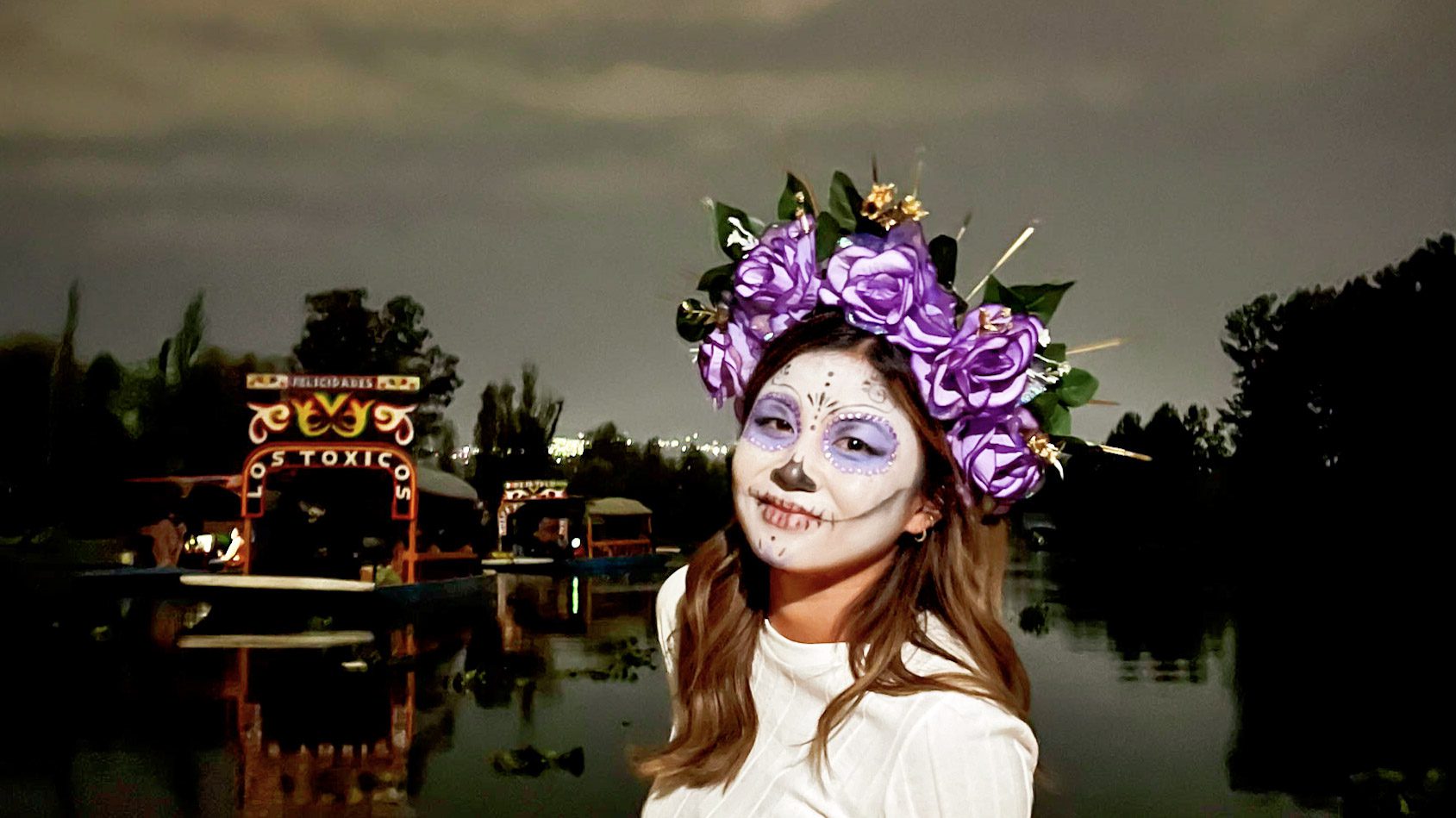
Ask a question